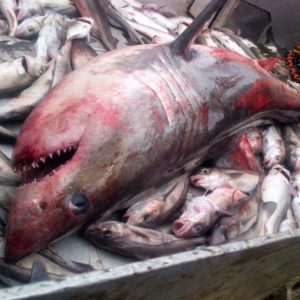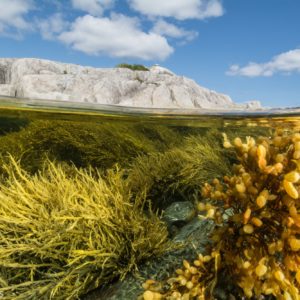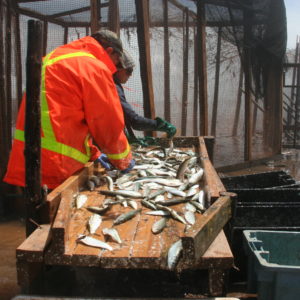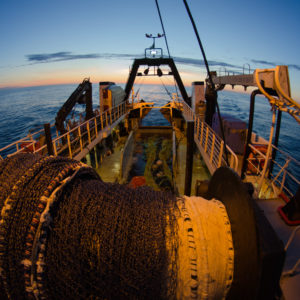Overfishing
Overfishing is considered the largest threat to the sustainability of our seafood resources.
Overfishing occurs when we take too many fish from an area, and the remaining fish are unable to reproduce and replenish their populations to a healthy level.
The devastating collapse of the once iconic Northern Atlantic cod fishery in the early 1990s remains one of the most globally recognized cases of overfishing. Today, cod populations remain at low levels, with only a few populations showing signs of slow recovery.
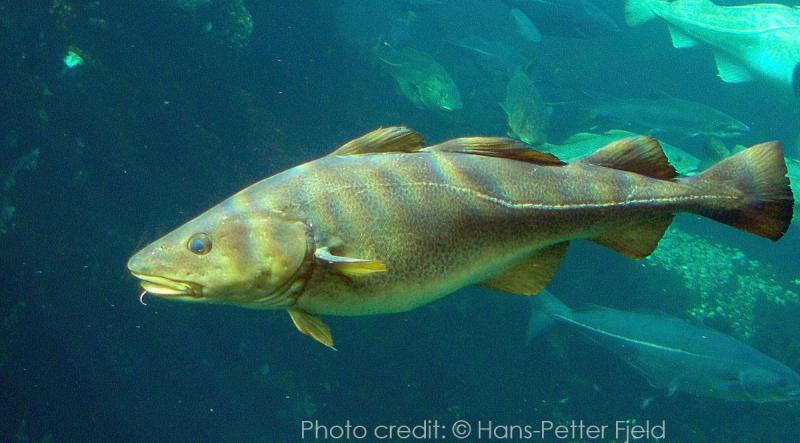
The Challenges
Modern Advances Equate to Bigger Catches
With more accurate technology and efficient fishing gear — and larger vessels able to stay out fishing for longer periods of time — we are catching more fish, much quicker than we have in the past.
Some Fish are More Vulnerable to Overfishing than Others
Typically, fish species that are large and have long life spans are more vulnerable to overfishing than smaller fish with shorter life spans. Age of reproduction also plays a role.
For example, catching a species that reaches sexual maturity at an older age before it reproduces (e.g. B.C. rockfish may be 15 to 20 years old before they reproduce) has a twofold negative effect on the population–removing the individual fish, and all the potential offspring it could have had. Species that produce large numbers of offspring are also potentially less vulnerable than those that have just a few per year (e.g. porbeagle sharks, a bycatch species in Canadian fisheries, typically have just four pups per year).
A Lack of Fish Population Data can Lead to Overfishing
Understanding stock status requires regular scientific monitoring of the fish populations being harvested. Not having accurate information about a fish population’s distribution and abundance can result in catch limits that are too high. Illegal Unreported and Unregulated (IUU) fishing can also lead to inaccurate information about a species’ abundance, since these catches are not reported, and it is unknown how many are removed from the fish population at any given time.
Effective Management, Monitoring and Enforcement are Crucial
Economic incentives (catch more to make more) and the lack of effective management can lead to overfishing. Highly migratory species that cross between jurisdictional boundaries can be subject to overfishing if they are governed by different management plans. Despite the existence of Regional Fisheries Management Organizations (RFMOs), fisheries that occur in the high seas can still have serious monitoring and enforcement challenges.
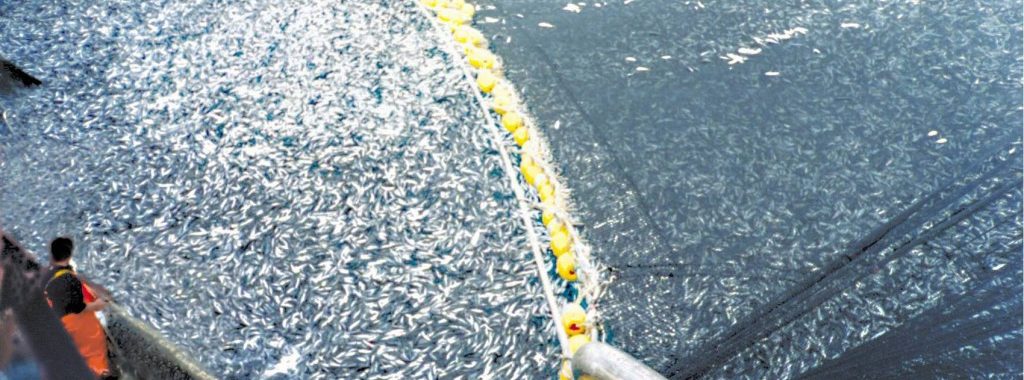
The Solution
The causes of overfishing are complex and varied, and so are the solutions – however, proper and precautionary management is key. Overfishing is not an automatic outcome of capturing fish. Some level of harvest, on any type of fish, can happen sustainably, provided the proper management is in place.
Overfishing can still take place even in situations where the management seems strong.
One solution is to employ precautionary management of fish stocks, to account for uncertainties or unknowns about the population. In fact, studies have shown that if fishing effort is significantly reduced when a stock is in decline, recovery can be expected within a decade.
Canada can begin to address overfishing and severe fish stock declines by developing rebuilding plans for depleted species, halting targeted fisheries for populations in the critical zone, and ensuring that species recovery is part of the objectives of marine protected areas and other marine conservation measures.
